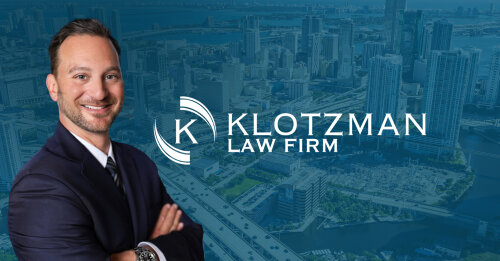Best Travel Accident Lawyers in New York City
Share your needs with us, get contacted by law firms.
Free. Takes 2 min.
List of the best lawyers in New York City, United States
1. About Travel Accident Law in New York City, United States
Travel accident law in New York City covers injuries that occur during travel or while using transportation and travel-related services. In NYC, you may rely on a mix of state, federal, and international rules to determine who pays medical bills, lost wages, and damages. Key concepts include first party no-fault auto benefits, third party personal injury liability, and international carriage rules for flights under the Montreal Convention. Practically, a NYC resident injured on a subway platform or a tourist hurt in a hotel slip may pursue different claims depending on fault and applicable law.
Understanding the distinction between travel insurance coverage and a civil injury claim is essential. A travel policy may provide medical, trip interruption, or baggage benefits, while a personal injury case seeks damages from the at fault party. A knowledgeable solicitor can help you decide which route fits your situation and coordinate evidence across insurers, employers, and service providers. In New York City, local transit injuries, hotel accidents, and plane travel incidents often involve overlapping rules from multiple authorities.
Montreal Convention liability rules for international air travel apply to many NYC passengers, with uniform rules on compensation for bodily injury. Source: U.S. Department of Transportation. Montreal Convention overview.
2. Why You May Need a Lawyer
These real-world scenarios illustrate concrete reasons to consult a travel accident solicitor in New York City. Each scenario involves different claims, deadlines, and evidence requirements.
- A tourist injures a knee after a slip on a wet hotel lobby floor in Midtown Manhattan. The hotel disputes fault and liability coverage. A lawyer helps gather witness statements, hotel maintenance records, and medical bills to pursue a third party claim.
- A commuter is hit by a taxi while crossing a crosswalk in Queens. The driver carries minimal coverage, and the victim needs medical care and wage loss compensation. An attorney can navigate no fault benefits, bodily injury claims, and uninsured/underinsured motorist issues.
- A rider is injured in a ride-hail collision in Brooklyn. The insurer denies coverage or underpays medical expenses. A solicitor can coordinate with the ride-hail company’s insurance and the victim’s health providers to maximize compensation.
- An airline passenger sustains injuries during a domestic flight into JFK Airport. The claim may involve the Montreal Convention or federal aviation rules. A lawyer helps determine applicable limits, evidence, and recovery from the carrier or its insurer.
- A hotel guest sustains a fall due to a broken stair in Manhattan, with questions about premises liability and comparative fault. A lawyer can investigate maintenance records and obtain surveillance footage to establish liability.
- An employee travels for work in NYC and is injured en route to a work site. No-Fault auto coverage may apply, and workers’ compensation rules may interact with a civil injury claim. An attorney can coordinate benefits and avoid loss of entitled compensation.
3. Local Laws Overview
Below are three key legal concepts and statutes relevant to travel accidents in New York City. Each governs a distinct aspect of travel related injuries and coverage.
- Montreal Convention for International Carriage by Air - Governs liability for international flight injuries and death. In the United States, the Convention has been in force since February 28, 2003, and provides uniform limits on compensation per passenger for bodily injury. This framework affects NYC travelers on international legs and carriers based in the U.S. or operating from NYC airports. DOT Montreal Convention page.
- New York No-Fault Auto Insurance Law, Article 51 of the Insurance Law - Requires no-fault benefits for medical expenses and wage loss after auto accidents, regardless of fault, with specified timelines and coverage rules. This applies when travel injuries occur in motor vehicle incidents in New York. New York Department of Financial Services - No-Fault Insurance.
- Civil Practice Law and Rules, CPLR Article 2, Section 214 - Establishes the statute of limitations for personal injury actions in New York, typically three years from the date of injury. This governs when a travel accident claim must be commenced in New York courts. New York Courts - Statute of Limitations.
These provisions show how travel incidents can involve international liability rules, domestic no-fault coverage, and civil action timelines. Understanding which rule applies helps you plan timely medical, insurance, and legal steps. In practice, a NYC solicitor can assess your case and map the relevant legal track for your injuries.
4. Frequently Asked Questions
What counts as a travel accident under New York law?
A travel accident includes injuries occurring during travel on carriers, in hotels, or while using transportation services in NYC. It can involve auto accidents, hotel premises liability, or flight related injuries under international law. A lawyer can identify all potential claims.
How do I start a travel accident claim in NYC?
Begin by collecting medical records, incident reports, and witness contacts. Then consult a NYC travel accident solicitor who can advise on no-fault, liability, and potential settlements.
When should I hire a solicitor after a travel accident in NYC?
Hire promptly after the incident to preserve evidence and meet statute of limitations deadlines. Early legal advice also helps with insurance interactions and claim strategy.
Where can I file a travel accident claim after a NYC injury?
Claims may be filed with the at fault party’s insurer, the no-fault insurer for auto injuries, and in some cases with the carrier for international travel. A lawyer can coordinate these filings.
Why might an insurer deny a travel accident claim in New York?
Common reasons include disputed fault, insufficient medical documentation, or misinterpretation of policy terms. A solicitor can challenge denials and gather needed evidence.
Can I sue for travel related injuries in NYC?
Yes, if another party is legally at fault and you have a viable claim. A lawyer can evaluate liability, damages, and the best route to recovery in court or via negotiation.
Should I hire a lawyer before speaking with an insurer?
Speaking with insurers with legal counsel nearby is prudent. A solicitor can help frame questions, preserve rights, and avoid accidental admissions.
Do I need to file a No-Fault claim for auto travel injuries?
Often yes, if the incident involves a motor vehicle. No-Fault benefits cover medical expenses and wage loss, but there are thresholds and procedures to follow.
Is there a time limit to file personal injury claims in NYC?
Yes. In New York, personal injury actions generally must be filed within three years of the injury, under CPLR 214. Exceptions exist for certain cases.
How long do travel accident cases typically take in NYC?
Simple settlements may resolve in a few months. More complex cases with litigation can take 12-24 months or longer depending on court schedules and discovery needs.
What is the difference between travel accident insurance and a personal injury claim?
Travel insurance provides policy benefits for specific losses. A personal injury claim seeks compensation from a negligent party and may cover broader damages beyond medical costs.
5. Additional Resources
Useful, official resources for travel accident matters in New York City include the following organizations and government bodies.
- New York State Workers' Compensation Board - Administers workers’ compensation benefits for injuries sustained on the job; includes medical and wage loss coverage. New York WCB.
- New York State Department of Financial Services - Oversees consumer protection for insurance products, including travel and no-fault auto insurance. New York DFS.
- U.S. Department of Transportation Air Consumer Protection - Provides information on airline passengers rights and international carriage rules, including the Montreal Convention. DOT Air Consumer.
6. Next Steps
- Document the incident thoroughly within 24-72 hours: take photos, collect witness contact details, and request any security or maintenance logs relevant to the scene.
- Gather medical records and bills promptly; keep all receipts and a daily diary of symptoms and activity restrictions.
- Identify potential parties and insurers to contact, including the carrier, hotel, transit agency, and employer if travel was work related.
- Research NYC travel accident solicitors with a focus on NYC practice area and reviewable client outcomes; prepare a short list of 3-5 candidates.
- Schedule consultations within 1-2 weeks of incident; bring all documentation and prepare questions about fees and case strategy.
- Choose a solicitor and agree on a contingency fee arrangement; confirm expected costs and communication plans in writing.
- Develop a case plan with your attorney that includes evidence gathering, insurance negotiations, and potential litigation timelines; expect updates every 4-6 weeks.
Lawzana helps you find the best lawyers and law firms in New York City through a curated and pre-screened list of qualified legal professionals. Our platform offers rankings and detailed profiles of attorneys and law firms, allowing you to compare based on practice areas, including Travel Accident, experience, and client feedback.
Each profile includes a description of the firm's areas of practice, client reviews, team members and partners, year of establishment, spoken languages, office locations, contact information, social media presence, and any published articles or resources. Most firms on our platform speak English and are experienced in both local and international legal matters.
Get a quote from top-rated law firms in New York City, United States — quickly, securely, and without unnecessary hassle.
Disclaimer:
The information provided on this page is for general informational purposes only and does not constitute legal advice. While we strive to ensure the accuracy and relevance of the content, legal information may change over time, and interpretations of the law can vary. You should always consult with a qualified legal professional for advice specific to your situation.
We disclaim all liability for actions taken or not taken based on the content of this page. If you believe any information is incorrect or outdated, please contact us, and we will review and update it where appropriate.













